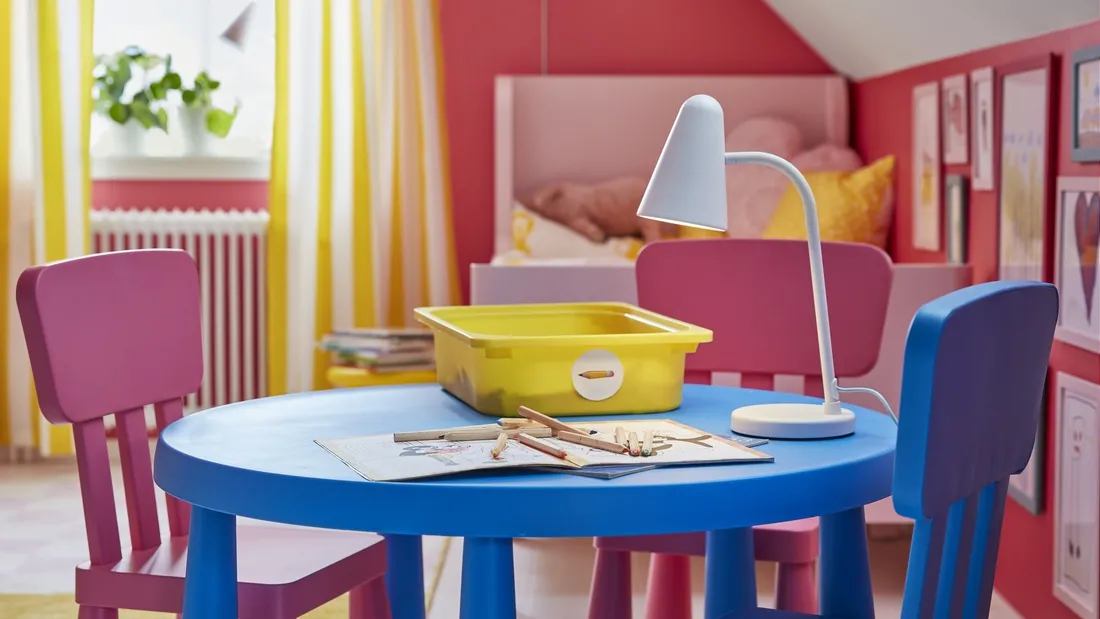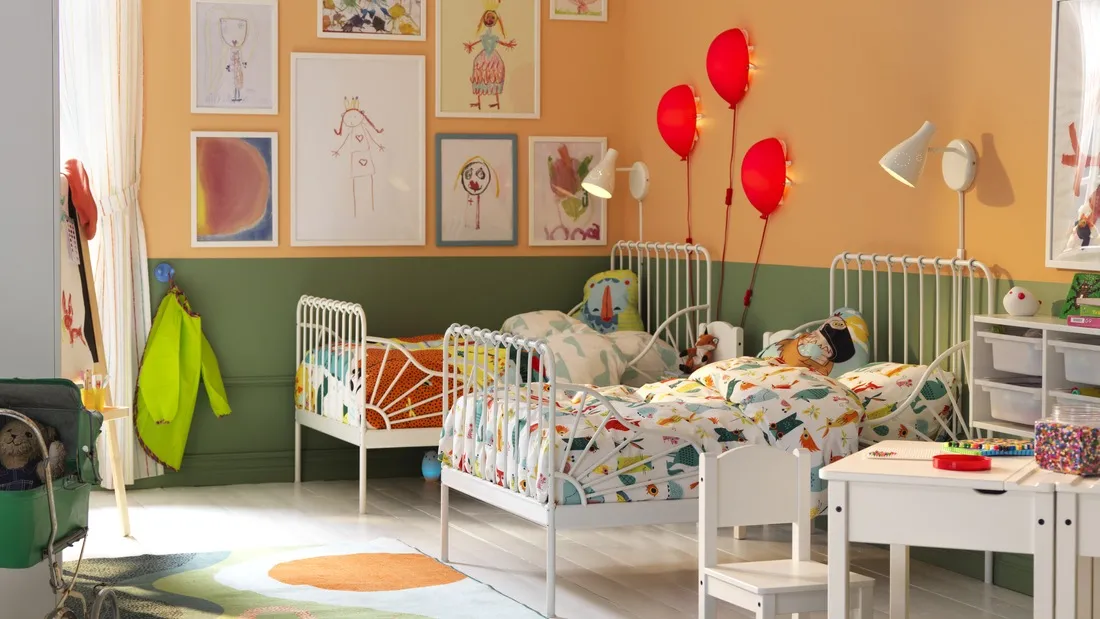Cheerful paint ideas for a cozy kids' bedroom




Choosing the right paint for a child's room is a crucial step in creating a comfortable space that supports their development. Discover various color options for boys' and girls' rooms that match their personalities and needs.
Cheerful colors like blue, red, yellow, and gray can influence the mood of a child's bedroom, providing positive energy and a pleasant atmosphere.
With the right color inspiration, you can create a bedroom that is not only visually appealing but also supports your child's creativity and well-being.
Selecting the right paint for a child's room plays a significant role in creating a comfortable and enjoyable environment. The color of the paint can affect the child's mood and creativity, as well as impact their health and safety.
Here are some factors to consider:
Choose paint that is free from harmful chemicals to ensure the child's safety. Safe paint not only reduces the risk of chemical exposure but also maintains the child's health.
Colors like bright yellow can create a cheerful atmosphere and improve mood. Conversely, cream and other classic colors can help slow the breathing and lower the heart rate.
Bright and engaging colors, such as vivid yellow, can stimulate creativity and help children feel more involved in their activities.
By choosing the right paint color, you can influence your child's mood and support their development in a healthy and enjoyable environment.
When selecting paint for a child's room, consider the type of paint to be used. Water-based paints are easier to clean and tend to have a lighter smell compared to oil-based paints.
While oil-based paints may be more durable, water-based paints are generally safer for a child's room environment.
Additionally, choose paints with antibacterial and antifungal properties to enhance cleanliness and health in the room. These paints help prevent the growth of microorganisms that can affect the child's health.
Paint options for children's rooms
Consider color choices that match the theme for your child's room to create a space that is both enjoyable and supportive of their development.
Also Read: Make organising more fun
Selecting paint colors for a child's room involves aligning with their age and personality. Here are some tips to help you make the right choice:
For babies and toddlers, opt for calming colors like blue or white that support restful sleep. For older children, bright colors like yellow or orange can stimulate creativity and enthusiasm.
Energetic children may benefit from bold colors like red or other vibrant hues that boost energy. Conversely, more subdued children might be more comfortable with softer colors like gray or pink.
Combine primary colors with complementary accent colors to create a balanced color scheme. For example, pair blue with white accents for a calming effect, or combine yellow with gray for a refreshing look.
Some colors can influence blood pressure and mood. Choose colors that balance the atmosphere, such as using soft hues to create a more relaxing environment in the child's room.

Coordinating paint colors with room decor can enhance the overall look and create a harmonious atmosphere. Choose wall paint colors that complement furniture and accessories to achieve the desired effect.
Here are some tips and theme ideas:
Also Read: Make your gifts more special
Before starting the painting process, ensure thorough preparation for a neat and long-lasting result. First, choose a paint color that suits the child's needs and preferences.
For boys' rooms, consider colors like blue or green, while pink and pastel colors might be suitable for girls' rooms. Also, consider calming colors or accent hues that can create a comfortable atmosphere.
Use the correct application techniques to achieve a satisfying finish. Ensure that you use clean tools and proper painting techniques.
Also Read: A room that’s all mine
When selecting and painting a child's room, several common mistakes can occur. Avoiding these mistakes can make the process smoother and the final result more satisfying.

Selecting the right paint for a child's room is not just about aesthetics but also a long-term investment in comfort and development. Appropriate paint colors can create an environment that supports creativity, calmness, and happiness for your child.
Additionally, high-quality paint will last longer, reducing the need for maintenance and repainting in the future. To complete the child's room, also consider adding appropriate children room lighting and decor for optimal ambiance and enjoyment.
Please enter the verification code sent to your phone number
Did not receive OTP?
Resend code in seconds
